Learn the rangiri “random cut” cutting technique with my easy tutorial. This Japanese method of irregular rolling cuts makes same-size chunks of root veggies, eggplant, and cucumbers for the perfect taste and texture in your Japanese dishes.
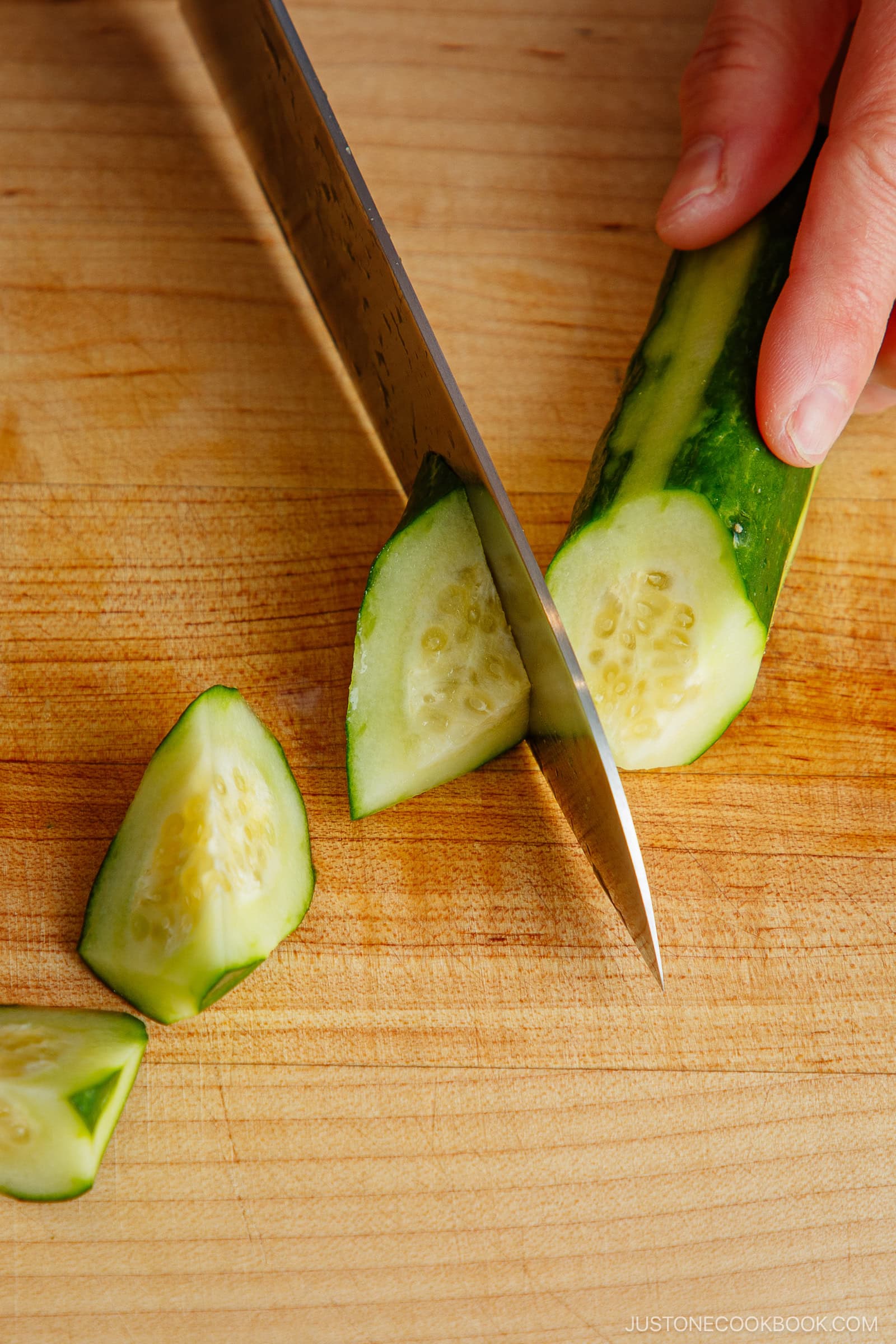
To make irregular rolling cuts, we use the rangiri cutting technique in Japanese cooking. This method creates vegetable pieces with intentionally varied surfaces that cook evenly and absorb flavor quicker. In this tutorial, I’ll teach you the rangiri: random cut cutting technique so you can cut veggies into this appealing shape when cooking Japanese recipes.
Use the rangiri cutting technique in my Nikujaga (Japanese Meat and Potato Stew), Tonjiru (Pork and Vegetable Miso Soup), and Japanese Chicken Curry recipes next!
What is Rangiri?
Rangiri (乱切り) means random cut in Japanese, yet it’s an intentional method. We use this vegetable cutting technique to create irregular, angled chunks by rotating the ingredient between each slice. You can use it to cut root veggies, cucumbers, eggplants, and other cylindrical vegetables into pieces of similar sizes. While they may have somewhat varied surfaces, they cook more evenly and absorb flavor well.
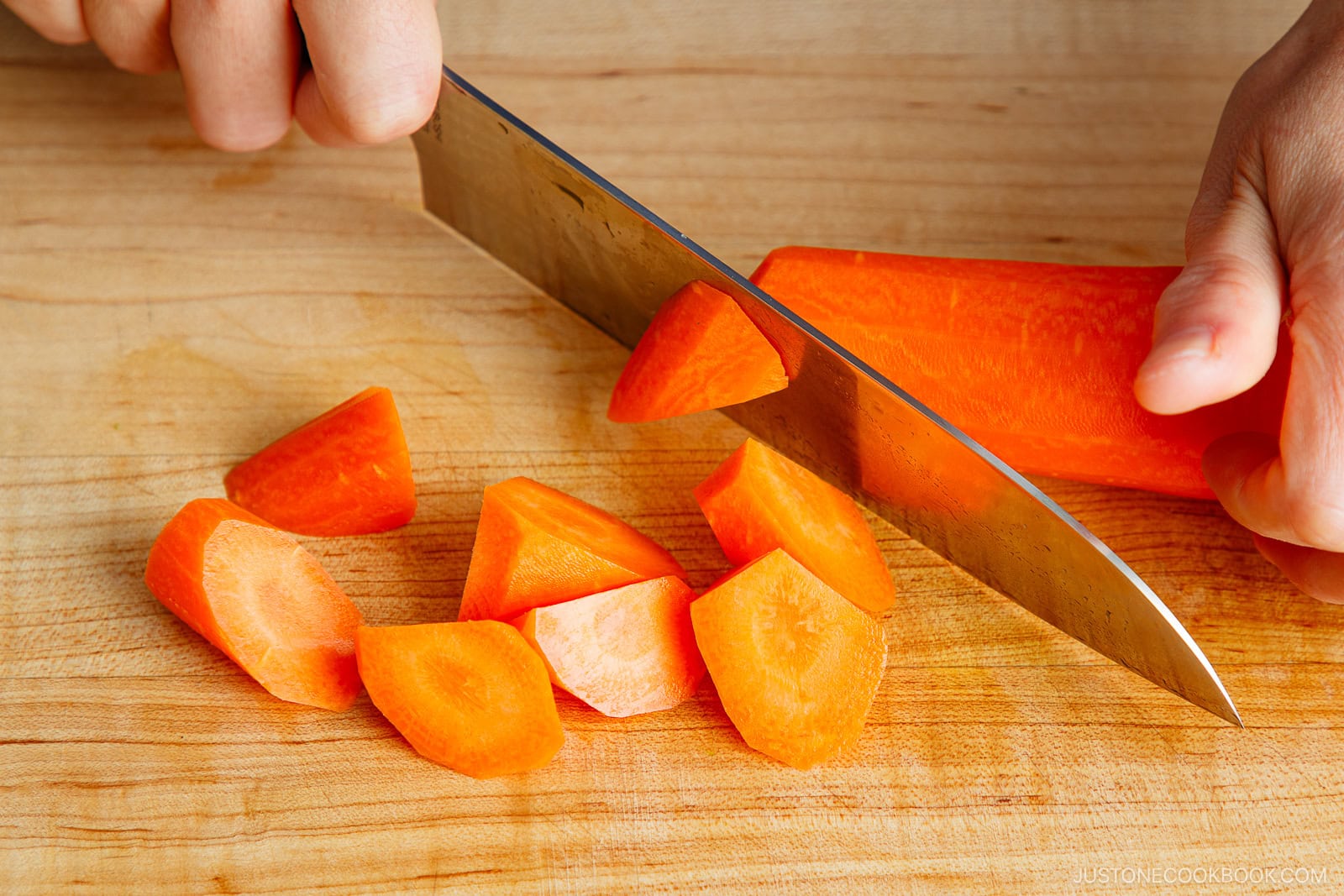
Why I Love the Rangiri (Random Cut) Cutting Technique
- Veggies absorb flavors faster – This method increases the ingredient’s surface area to help it absorb seasonings faster. I especially like using these random cuts for simmered dishes and stews.
- Ingredients cook at the same rate – Rangiri lets me cut the entire length of a carrot, eggplant, and other veggies into same-size chunks so all the pieces cook at the same rate for the perfect texture.
- Makes an attractive shape – Transforms vegetables into unique and pleasing shapes that gives a beautiful, wabi-sabi character to stews and simmered dishes.
- Results in less waste – Since I can control the shape and size of the pieces I cut with rangiri, I’m able to use even the thick and thin ends of root vegetables that I might otherwise skip.
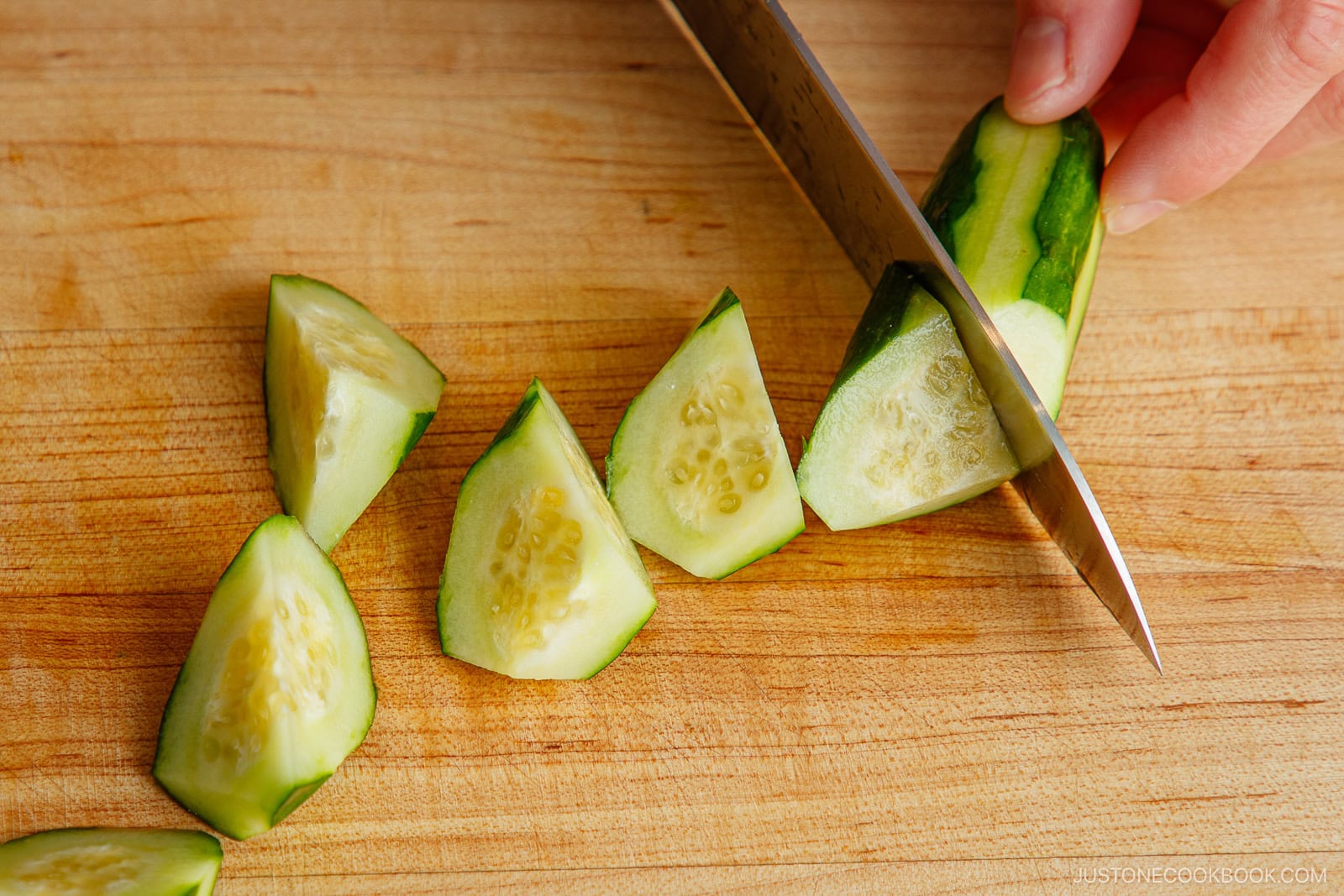
Types of Food for Rangiri (Random Cut)
- Carrot
- Cucumber
- Daikon
- Eggplant
- Lotus root
- Burdock root (gobo)
Find the printable tutorial below.
- sharp kitchen knife – I recommend a solid chef’s knife for this task. I use a high-quality Nagomi Damascus Gyuto Chef Knife that you can find at JOC Goods. You could also use a nakiri knife (Japanese vegetable knife), if you have one.
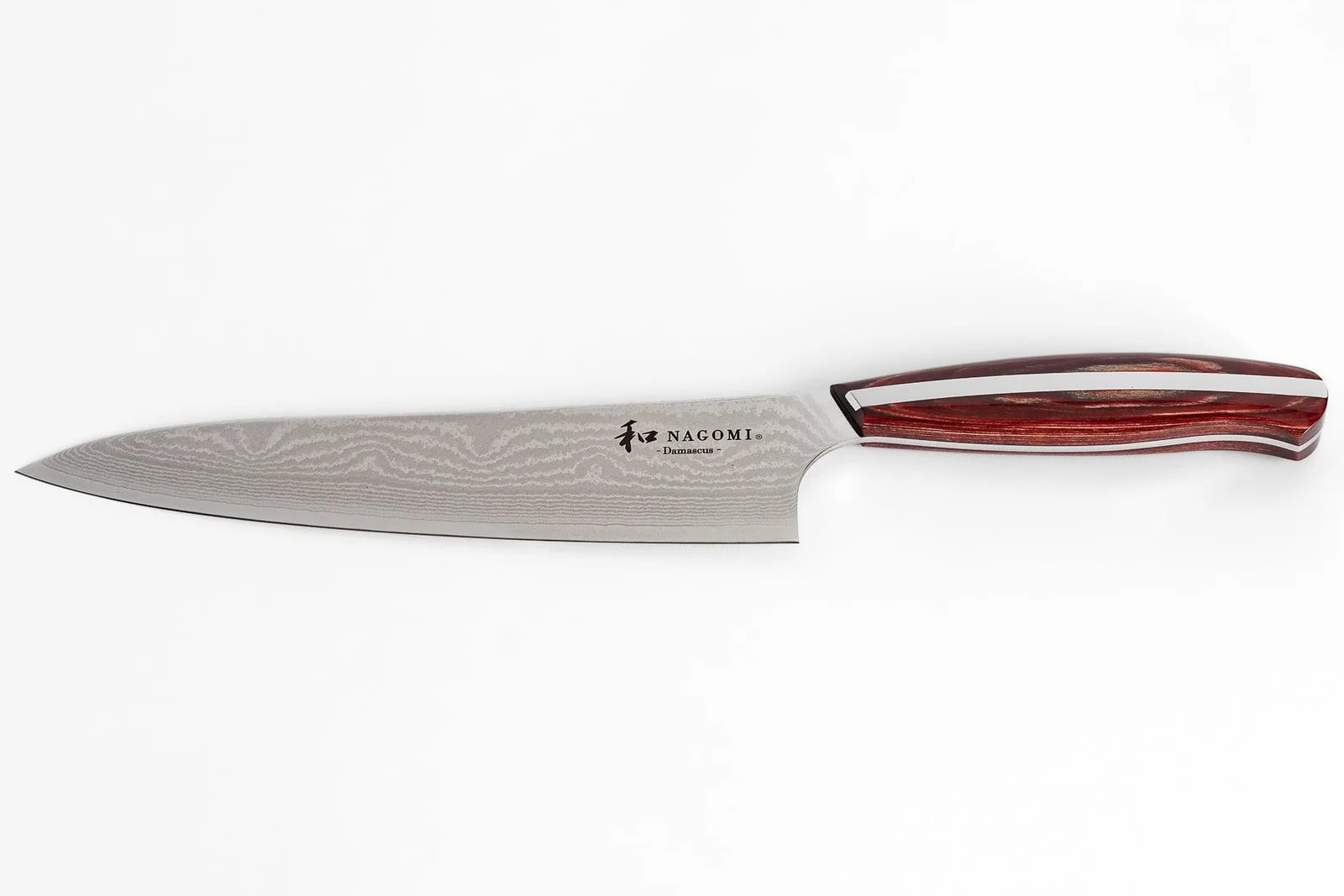
How to Make Rangiri (Random Cut)
- Make a diagonal cut. Hold the vegetable on the cutting board, and cut a piece diagonally to the desired size with a sharp knife.
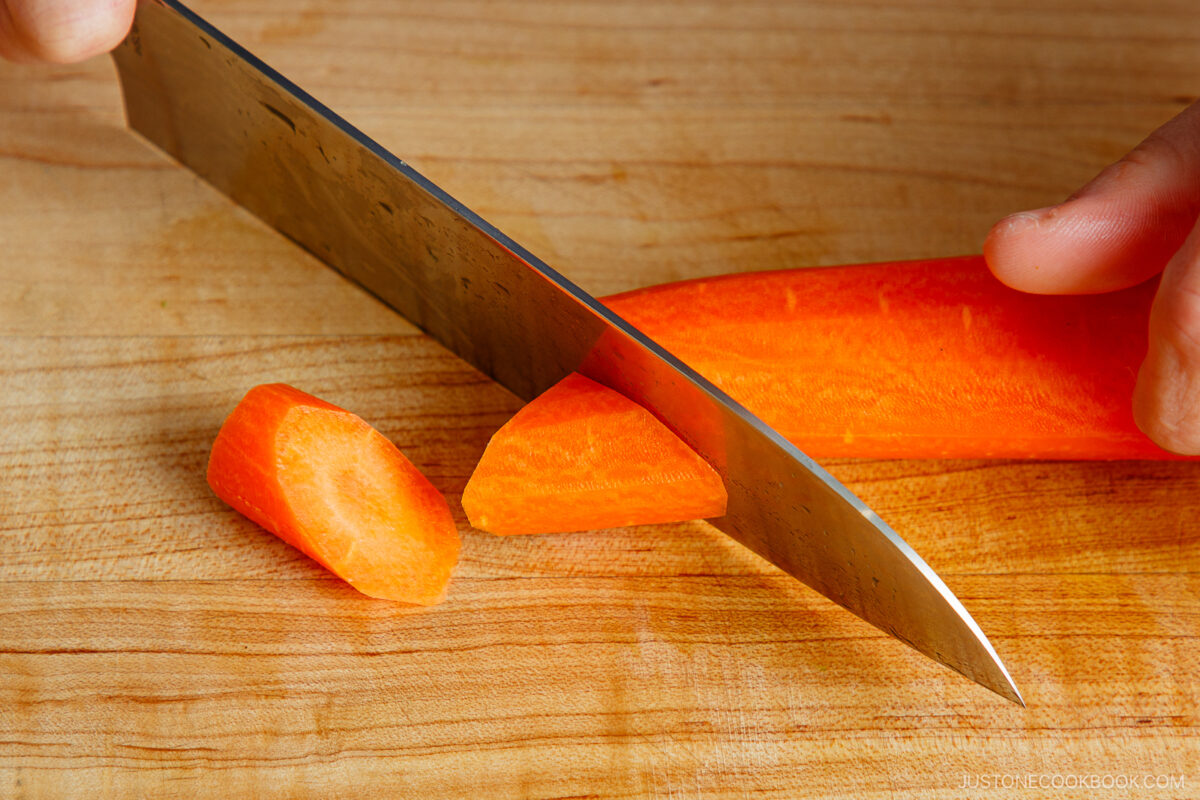
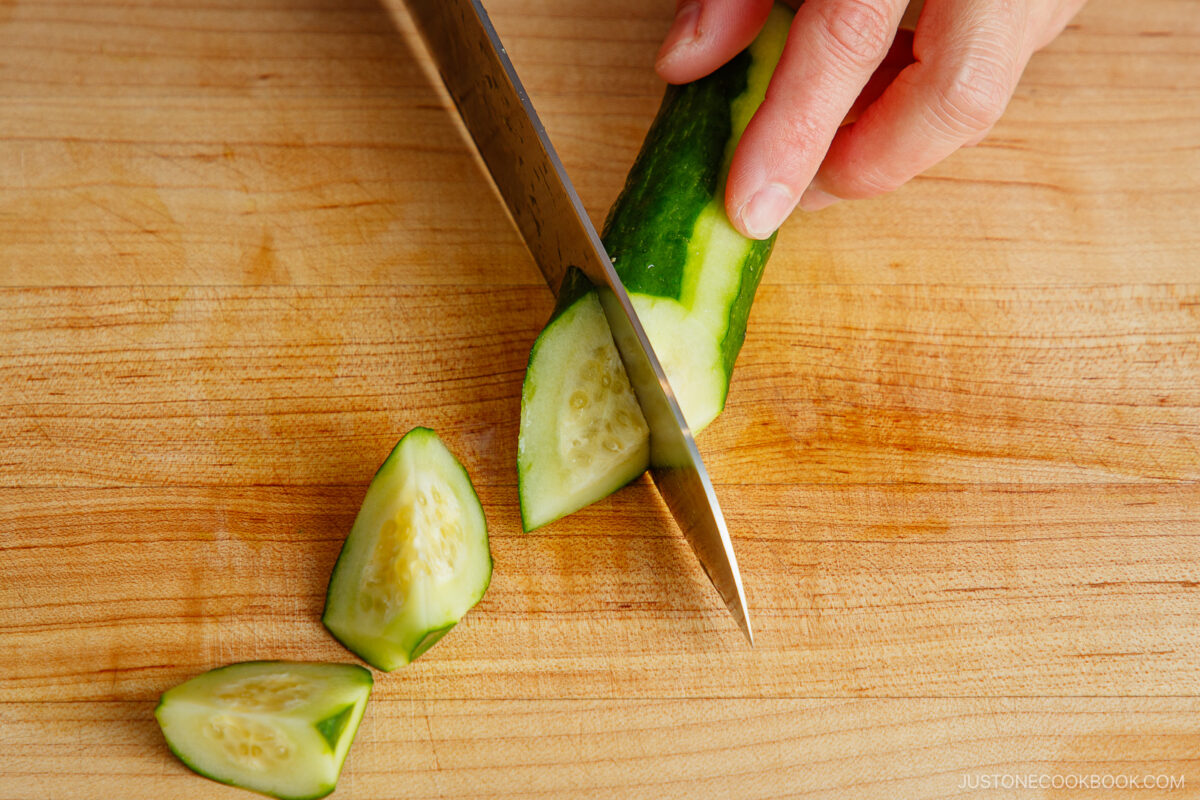
- Rotate a quarter turn. Roll the ingredient 90 degrees, then cut again at the same angle. Keep the pieces the same size.

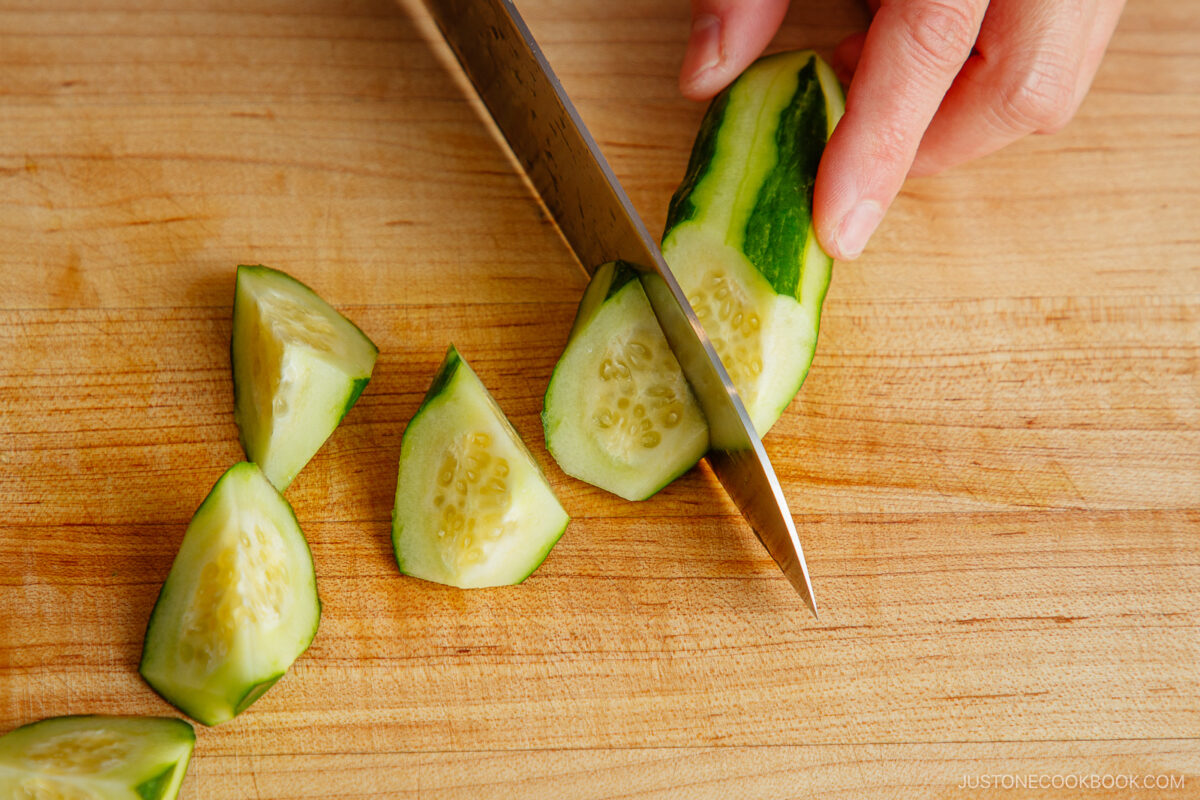
- Repeat. Cut → roll → cut → roll until you reach the end of the vegetable.
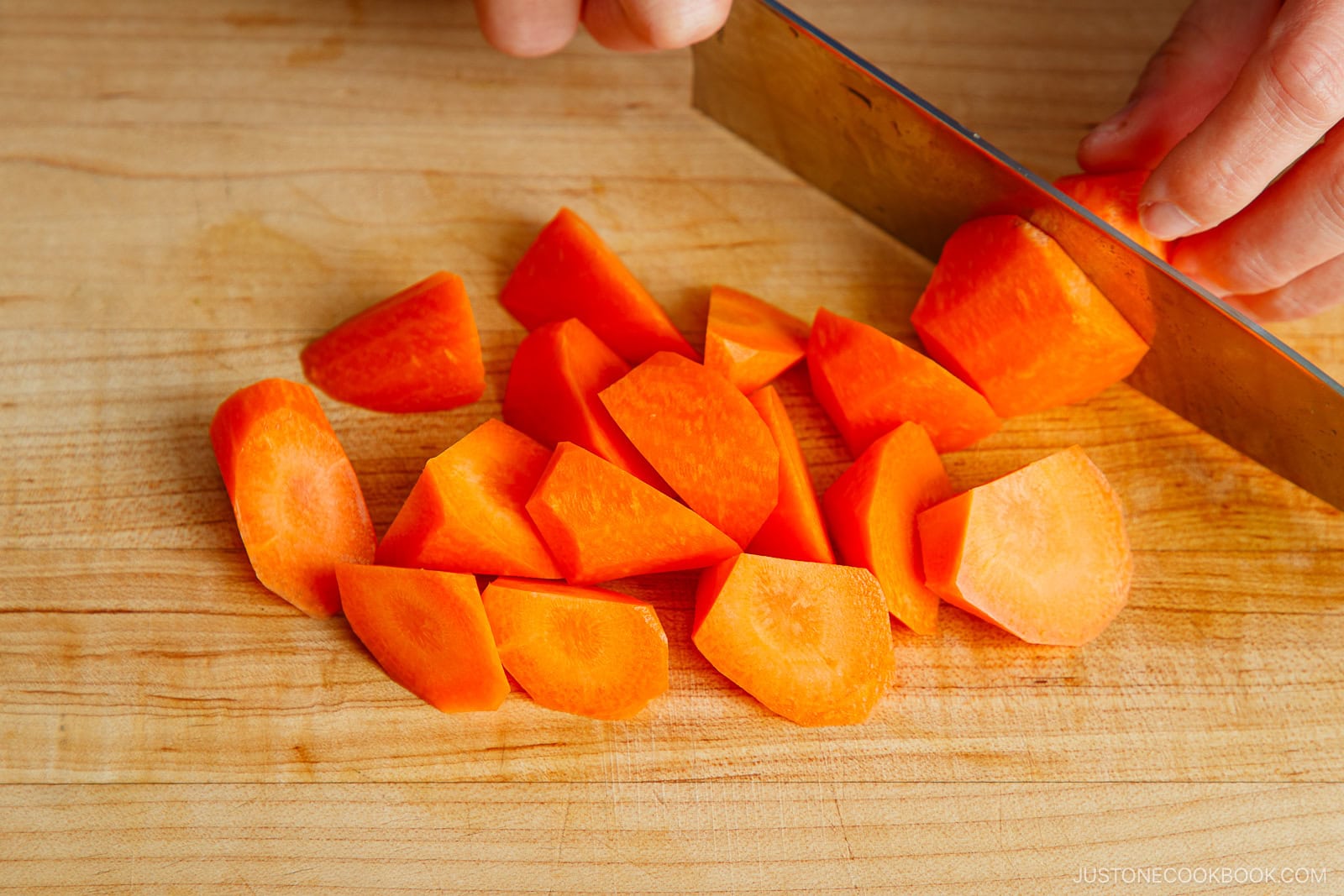
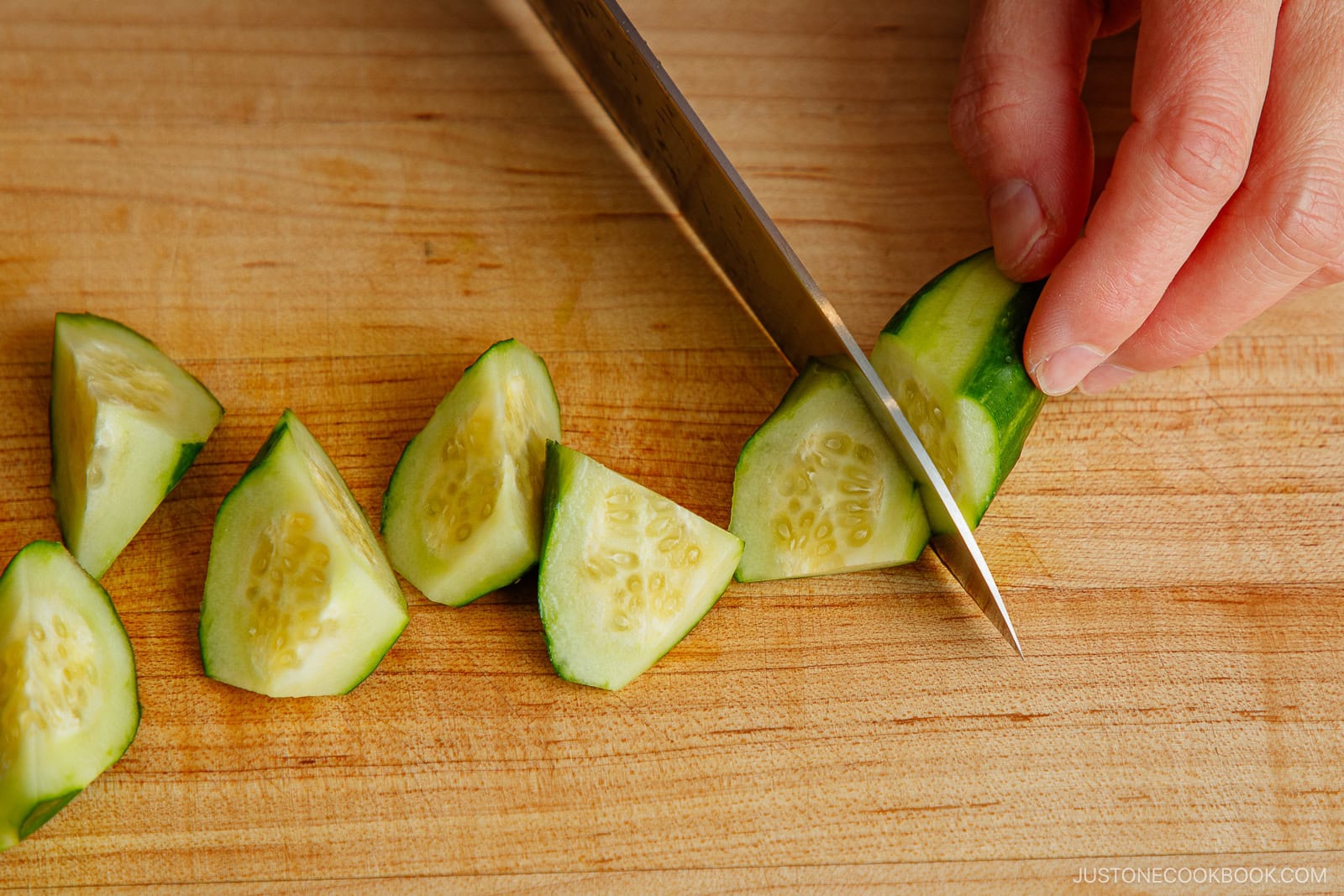
Nami’s Tips
- Keep each piece the same size and shape – This is the key point for rangiri to promote even cooking, despite the irregular cuts.
- Rotate the vegetable a quarter turn – After each slice, roll it 90 degrees before you cut again. I watch my last cut surface to keep track.
- Cut at the same angle every time – I hold my knife in the same position as I roll the veggie with my other hand. Maintain that diagonal for a consistent look and to create the most surface area.
- Adjust for thickness – If your veggie is thick at one end and thin at the other, like a carrot, please adjust where you cut in order to keep everything a similar size and thickness. I always maintain the same knife angle, so the chunks have the same general shape.
- Keep your knife blade sharp – I sharpen my knife regularly for safety and precision. This way, cutting is effortless and you’ll get very clean cuts.
How to Use the Rangiri (Random Cut) Cutting Technique
Now that you know how to cut rangiri, I hope you use this unique and effective technique for the vegetables in your home cooking. Below are some of my favorite Japanese dishes using this cut.
- Stews – Oden (Japanese Fish Cake Stew)
- Soups – Miso soup with root vegetables like Kenchinjiru
- Stir-fries – Miso Pork and Eggplant Stir-Fry
- Salads – Spicy Japanese Pickled Cucumbers
- Simmered dishes – Chikuzenni (Nishime)
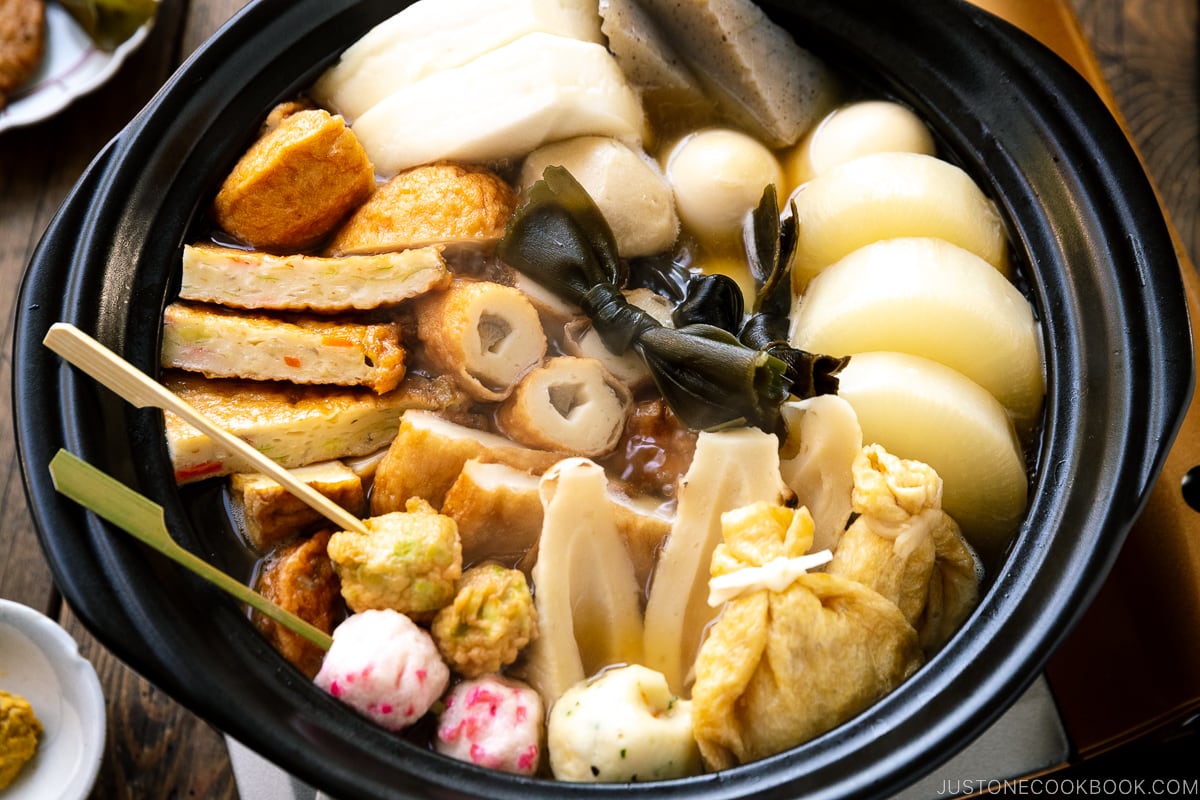
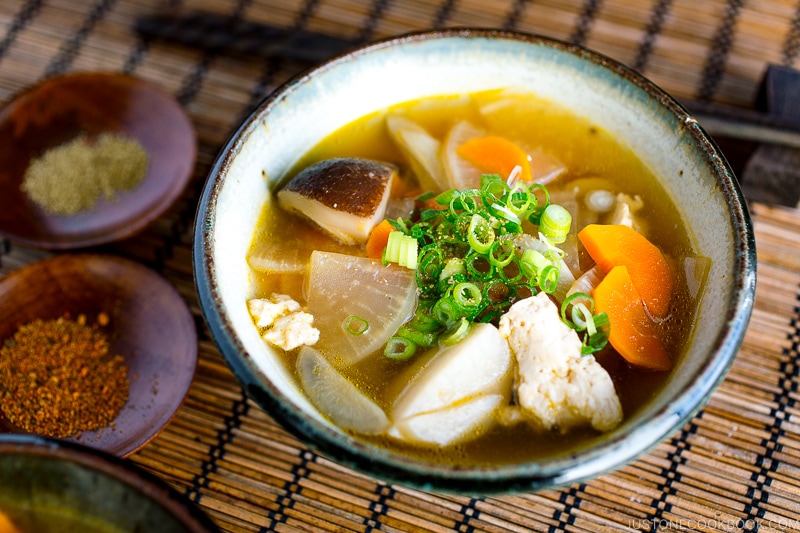
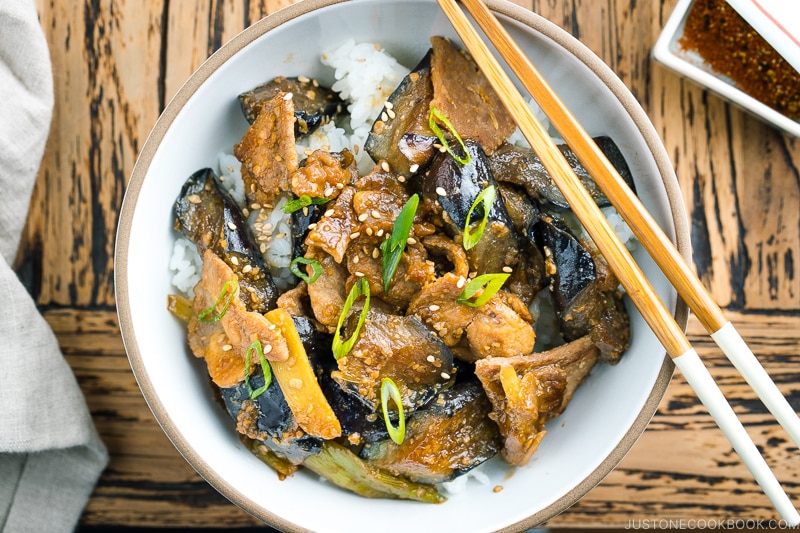
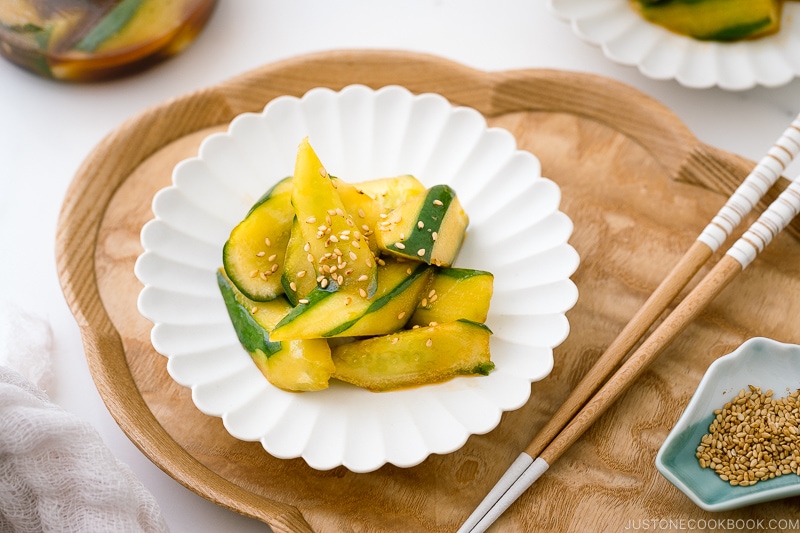
Frequently Asked Questions
What are other Japanese cutting techniques besides rangiri?
When preparing Japanese cuisine, I’ll use many different Japanese cutting methods at home. Some unique Japanese knife skills that I use in my daily home cooking include ran-giri, sogigiri (shaved cut), hangetsu-giri (half-moon cut), zaku-kiri (rough chop), and kazari-kiri (decorative cuts). In addition, I use many basic techniques like usugiri (thin strips), hosogiri (thin slices), wa-giri (round slices), nanamegiri (diagonal cut), and sengiri (julienne cut). Some others that you may find useful include butsugiri (block cut or chunky cross cut), kakugiri (cube cut or dice cut), sasagaki (thin shavings), and kushigatagiri (comb shaped or wedge cut). With a little practice and patience, you can learn many of these culinary skills using my Japanese Cutting Techniques tutorial.
Can I use rangiri on onion or cabbage?
Rangiri is suited for root vegetables or a cylindrical Japanese vegetable. See my Japanese cutting techniques guide for other methods that work well for aromatics like onions, garlic, ginger, and green onion. Cabbage leaves are also not well suited for rangiri.

Prep Time: 5 minutes
Total Time: 5 minutes
Japanese Ingredient Substitution: If you want substitutes for Japanese condiments and ingredients, click here.
Make a diagonal cut. Hold the vegetable on the cutting board, and cut the piece diagonally to the desired size with a sharp knife.
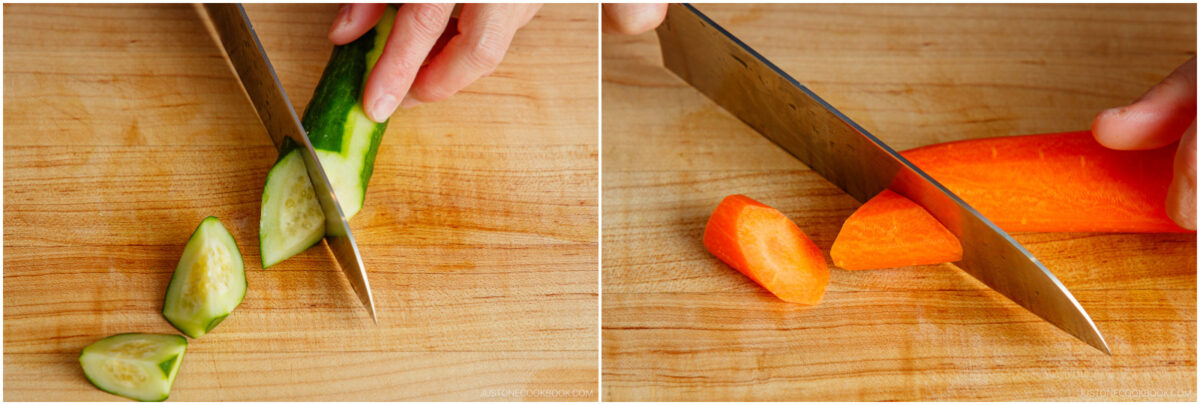
Rotate a quarter turn. Roll the ingredient 90 degrees, then cut again at the same angle. Keep the pieces roughly the same size.
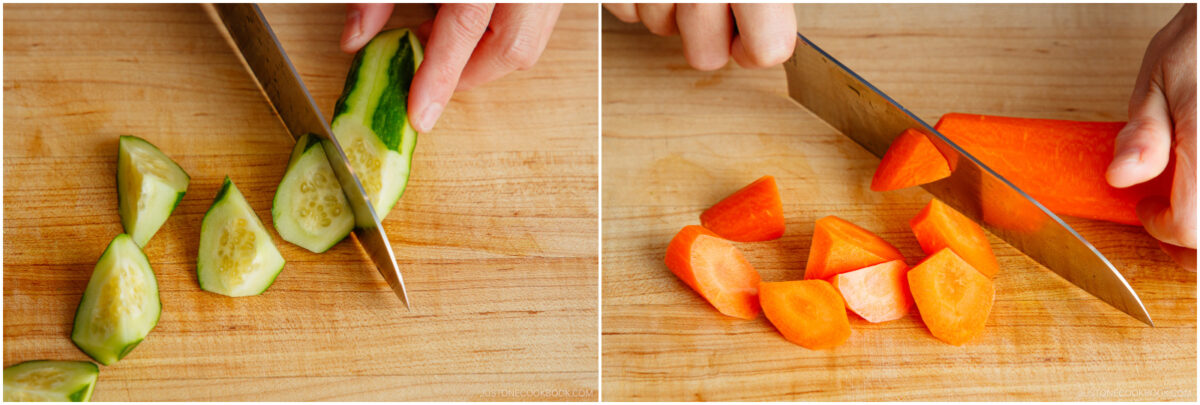
Repeat. Cut → roll → cut → roll until you reach the end of the vegetable.

Author: Namiko Hirasawa Chen
Course: How to
Cuisine: Japanese
Keyword: cutting technique
©JustOneCookbook.com Content and photographs are copyright protected. Sharing of this recipe is both encouraged and appreciated. Copying and/or pasting full recipes to any website or social media is strictly prohibited. Please view my photo use policy here.
If you made this recipe, snap a pic and hashtag it #justonecookbook! We love to see your creations on Instagram @justonecookbook!
Editor’s Note: This post was originally published on December 26, 2012. It was updated and republished on June 14, 2025, with new images and more helpful information to guide your cooking.


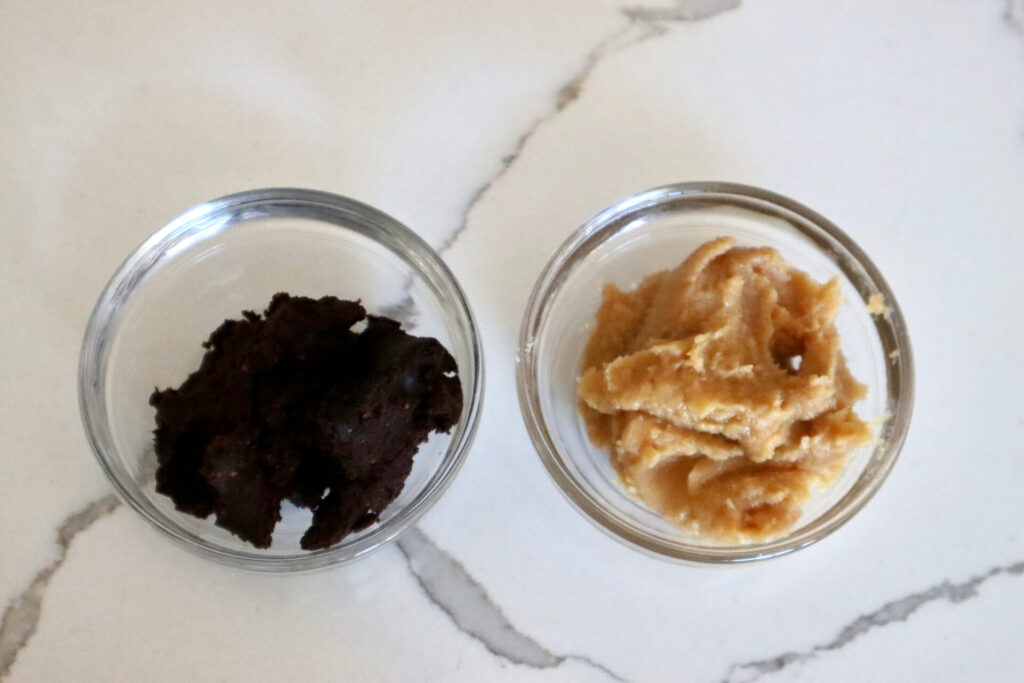





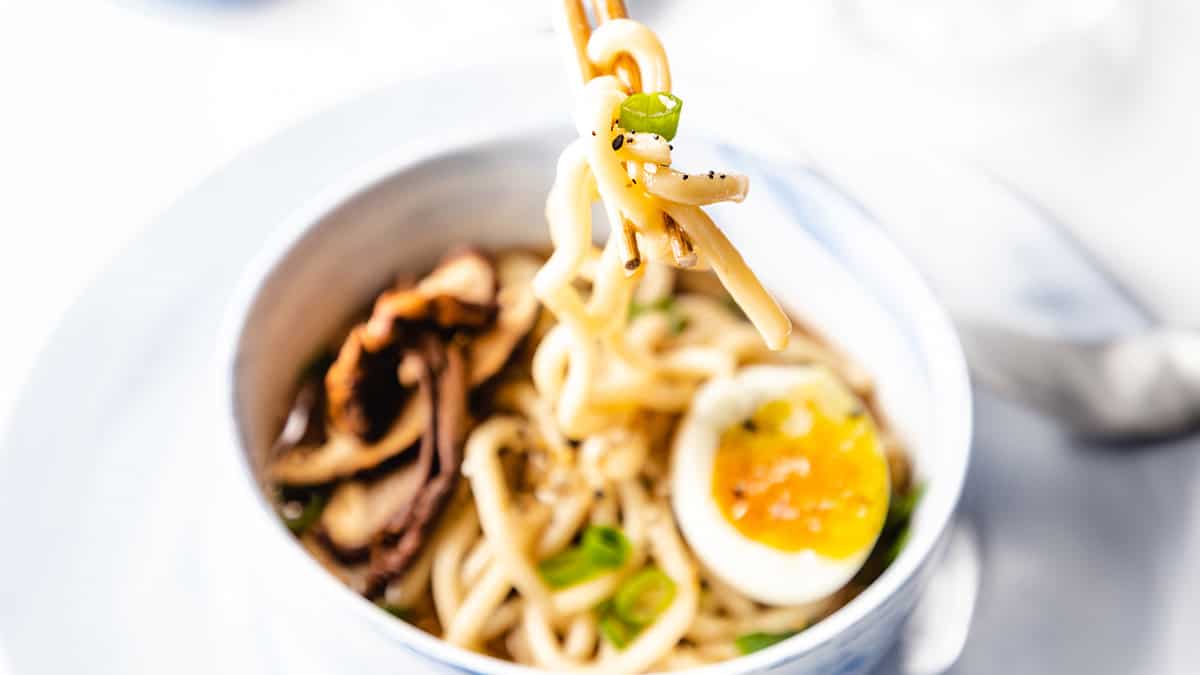


 English (US) ·
English (US) ·